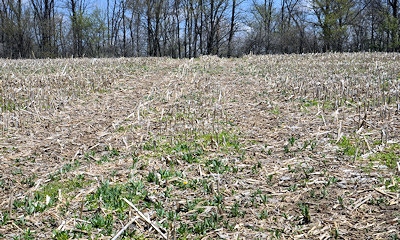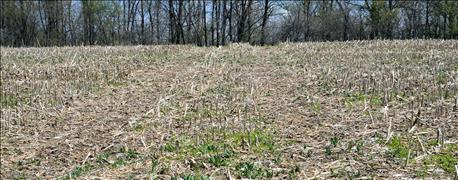March 13, 2016

Liquidity measures the ability of a business to meet financial obligations as they come due in the ordinary course of business, without disrupting the normal operations of the business. Commonly used liquidity measures include the current ratio, working capital, working capital to gross revenue, working capital to total expense and working capital per crop acre. Working capital, working capital to gross revenue, and working capital per crop acre are the focus of this article.
How to arrive at ‘working capital’ total

RENT OR OWN? If you own this land with little or no debt then it becomes part of your working capital, and can help you weather tough times.
Working capital is computed by subtracting current liabilities from current assets. Current assets include cash, fertilizer and supplies on hand at the end of an accounting period, crops held for sale and purchased livestock inventories. Current liabilities include operating loan balances at the end of the accounting period, and term debt payments due in the next year on non-current asset such as breeding livestock, machinery and land loans.
One way to use the working capital number to measure performance
Though working capital by itself is an important liquidity measure, it is often more relevant to measure working capital in relation to gross revenue or on a per acre basis. These adjustments make it possible to make comparisons across different farm sizes.
Where sufficient working capital helps in tight financial times
Why is working capital so important in today’s environment? To start with working capital represents a farm’s first defense against financial stress. When cash flow is tight or even negative, working capital can be used to cover the gap or shortfall.
Utilize working capital to your advantage
Working capital is also needed to replace non-current assets such as machinery and equipment in a timely fashion. Along this vein, working capital increases a farm’s flexibility. For example, farms with a strong working capital position are in in better shape to cash rent or purchase additional land.
Consider this example of the importance of working capital
A case farm in west central Indiana will be used to illustrate working capital concepts. The case farm has 3,000 acres of corn and soybeans. Of the 3,000 acres, 750 acres are owned. Working capital, using ending balance sheet values for 2015, was approximately $1,195,000. Dividing working capital by gross revenue results in a working capital to gross revenue ratio of 68.5%. Working capital per crop acre was $398.
Goals for working capital ratios
Working capital triggers for a farm of this size and type are a 35% working capital to gross revenue ratio and a working capital per acre of at least $250. The actual liquidity measures are above the triggers, indicating that this farm has a solid liquidity position. It’s still important for the farm to gauge the impact of a possible cash flow shortfall in 2016 and asset purchases this year on its working capital position.
When strong working capital position pays off
A strong working capital position helps a farm weather cash flow shortages and enables a farm to take advantage of opportunities as they arise, particularly if these opportunities involve asset leases and purchases. More information pertaining to financial management can be found on the web site for the Center for Commercial Agriculture
- Langemeier is director of cropping systems for Purdue University’s Center for Commercial Agriculture. He writes from West Lafayette.
You May Also Like




